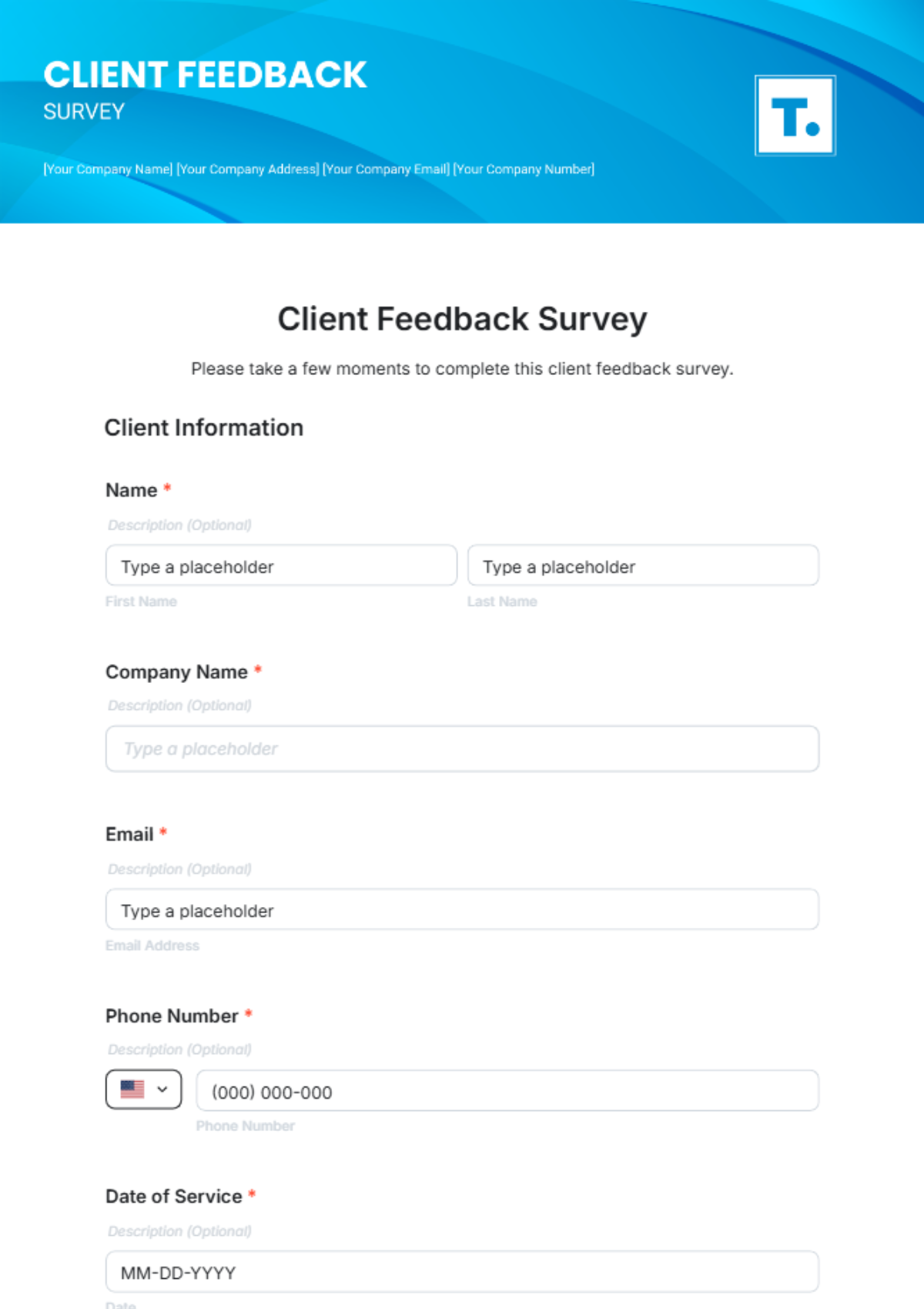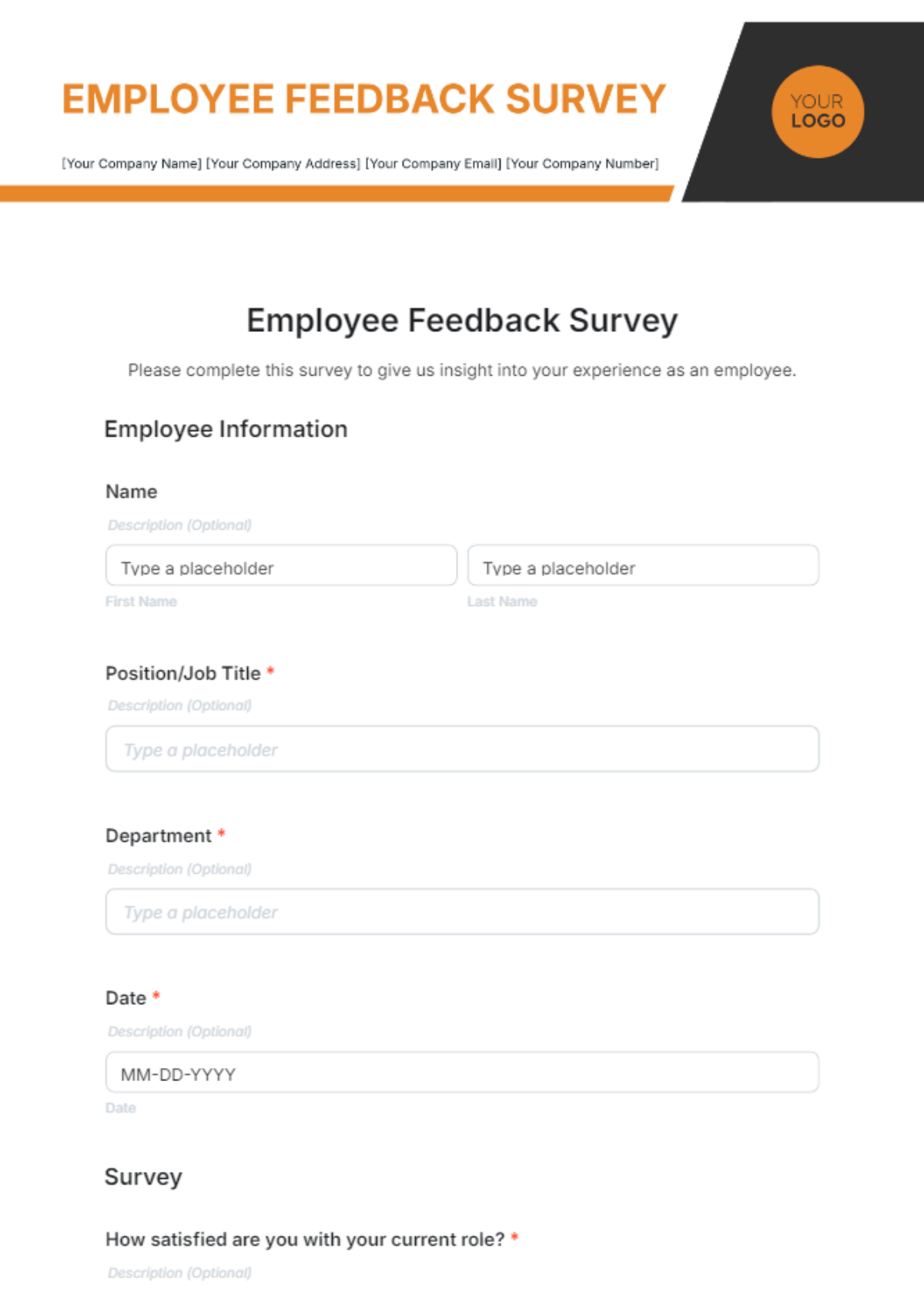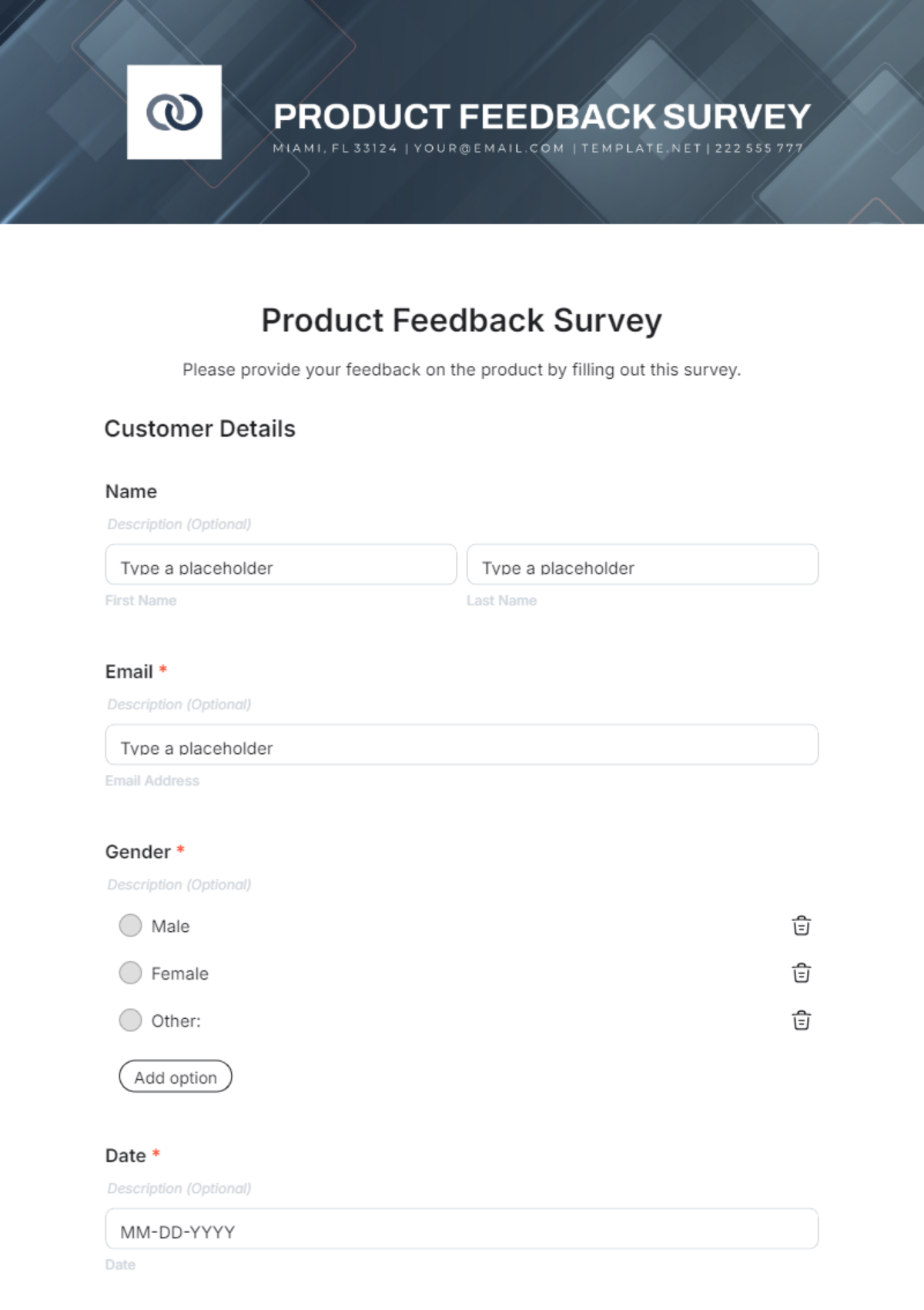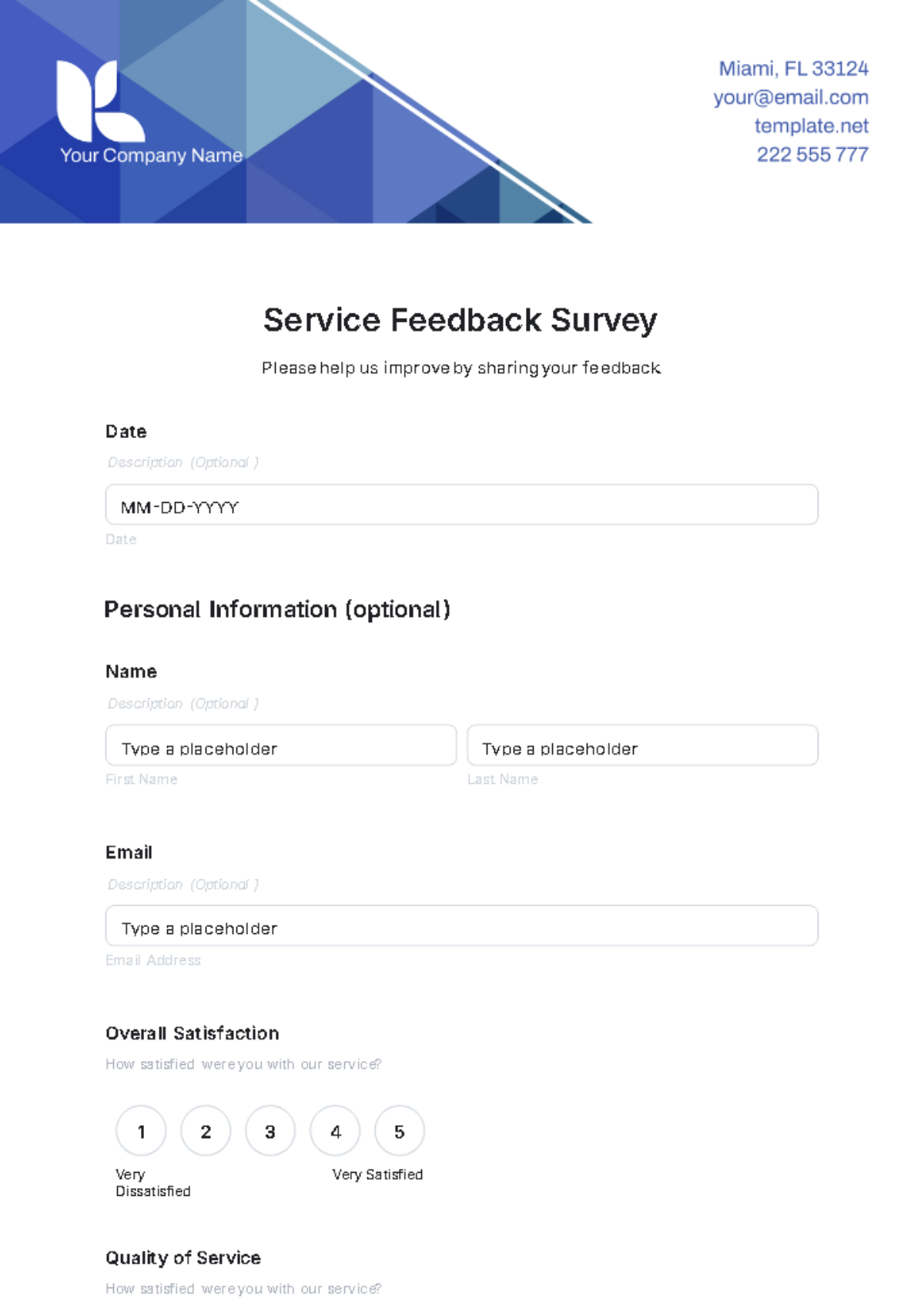Survey Report
Introduction
This report is a comprehensive analysis of a survey conducted to understand consumer preferences in the electronics market. The survey aimed to gather insights into purchasing behaviors, brand loyalty, and factors influencing purchasing decisions.
Methodology
The survey was conducted online and targeted a diverse demographic to ensure a representative sample. Participants were aged between 18 and 65 and included both genders. Data collection took place over a period of four weeks, and a total of 1,000 responses were received.
Survey Design
The survey consisted of 20 questions, divided into sections focusing on demographics, purchasing behavior, brand preferences, and usage patterns. Both multiple-choice and open-ended questions were included to capture quantitative data and qualitative insights.
Demographics
The respondents' demographics were as follows:
Age Group | Percentage |
|---|---|
18-24 | 15% |
25-34 | 30% |
35-44 | 25% |
45-54 | 20% |
55-65 | 10% |
Gender distribution was equally split, with 50% male and 50% female respondents.
Findings
Purchasing Behavior
One section of the survey focused on understanding respondents' purchasing behaviors when it comes to electronics. Key findings include:
60% of respondents purchase electronics online, while 40% prefer physical stores.
The average purchase frequency for electronics is once every 6-12 months.
Price is the most significant factor influencing purchases for 45% of respondents, followed by brand reputation (30%) and product features (25%).
Brand Preferences
Respondents were asked about their preferred electronics brands. The data revealed the following preferences:
Brand | Percentage of Preference |
|---|---|
Brand A | 35% |
Brand B | 25% |
Brand C | 20% |
Other | 20% |
Brand loyalty was notably higher among those preferring Brand A, with 70% indicating they would repurchase. Conversely, only 40% of Brand B's customers displayed brand loyalty.
Usage Patterns
Understanding how consumers use their electronics was another objective of the survey. Results showed that:
80% of respondents use their electronic devices daily.
Smartphones are the most frequently used device, with 95% usage among participants.
Laptops and tablets are equally popular, with usage reported at 55% and 50% respectively.
Conclusion
The survey highlights the critical factors influencing consumer behavior in the electronics market. Price and brand reputation are paramount, with a significant preference for online shopping. Brand A emerged as the leader in consumer preference, though improvement in brand loyalty is possible across all brands. Understanding these trends can help stakeholders in the electronics industry better tailor their marketing and product development strategies.
Recommendations
Based on the findings, the following recommendations are suggested:
Enhance online shopping experiences to cater to the majority preference for e-commerce.
Focus on competitive pricing strategies, particularly for tech-savvy demographics.
Encourage brand loyalty through customer engagement initiatives and loyalty programs.
Regular updates and feature enhancements can boost product attractiveness and consumer satisfaction.

















































